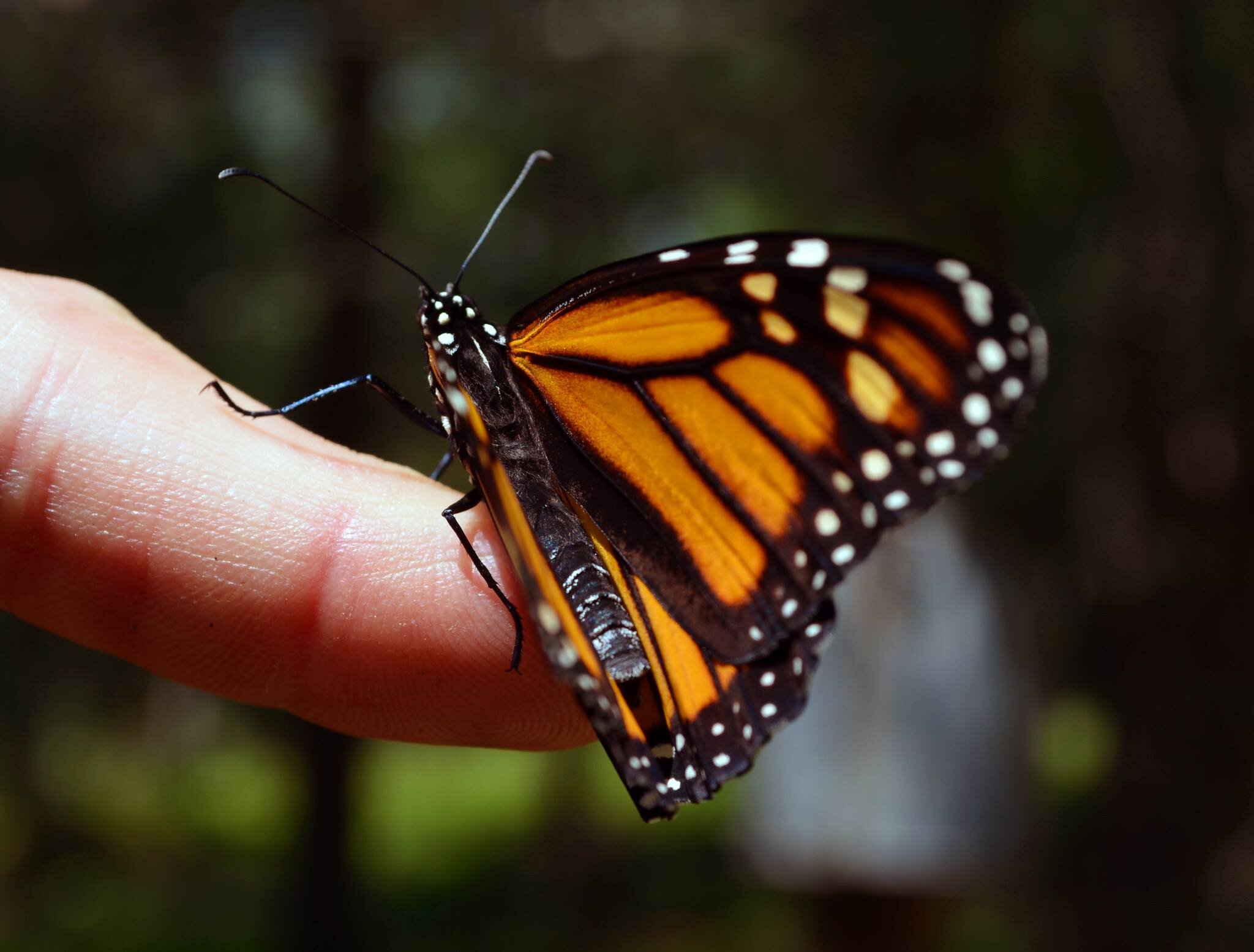Studies show that spending time in nature can reduce anxiety and even help heal trauma, which is why it’s more important than ever to protect wildlife refuges.
In a recent edition of the LA Times, Julie Graulich published a photo essay about her visits to Sacramento National Wildlife Refuge. In it, she details how weekly visits to the refuge have helped her family process and recover from the trauma of displacement due to the Paradise Fire, which killed 90 people and left tens of thousands homeless. She describes the refuge as a place where she and her husband can escape reality and enjoy less stressful surroundings. The process of healing has also sparked an interest in birds, and she details the ecological challenges that led to the founding of the wildlife refuge as a vital part of the Pacific Flyway.
She’s not alone in discovering the healing power of nature.
Tiny golden-crowned kinglet rocks a brilliant crown in Kenai National Wildlife Refuge, Alaska by USFWS / Colin Canterbury
Bryan Box, a military veteran and forest ecologist, shared a searing story about his work in Alaska and Wisconsin and the lingering trauma from war in The New Republic.
Rodney Stotts found way out of addiction and violence through the Earth Conservation Corps in Washington DC, eventually helping the U.S. Fish and Wildlife Service re-introduce bald eagles to the Anacostia River and becoming a licensed falconer.
And in a schoolyard, among the concrete and blacktop of urban Los Angeles, a little girl points to a hummingbird hovering between the branches of a tree and says, “Watching birds makes me feel better.”
Monarch learning to use its wings from the U.S. Fish and Wildlife Service Midwest Region by USFWS / Joanna Gilkeson)
Many of us know that feeling when we see wildlife or a field of flowers; a combination of excitement and well-being that can feel all too fleeting in the city.
The healing benefits of nature have been well documented, but scientists and psychologists are just beginning to understand how a simple walk through a park can impact our mental and physical well being. In Japan, shinrin-yoku (“forest bathing”) is a practice that involves simply letting nature surround you, and it has been shown to reduce blood pressure, anxiety, and even increase immunity. A short amount of time in nature can produce these benefits, which is why developers, city planners, architects, and others involved in creating our built environment have prioritized a link to green space in their plans.
While there are many theories as to why nature has such a profound effect on our minds and bodies, the “why” simply isn’t as important as making sure wild places remain for people to visit, and for wildlife to find sanctuary. As Graulich points out in her essay, the Sacramento National Wildlife Refuge was created out of ecological necessity; 90% of California’s natural wetlands have been lost to development and other land uses not compatible with the needs of millions of migratory birds, as well as native plants and animals. As our public lands come under attack from business and political interests, it’s just as important that we save these places for ourselves as well as animals. What we lose when we allow roads and drills through sensitive areas like the Arctic National Wildlife Refuge isn’t just habitat, we lose our ability to truly be surrounded by nature. When we build a wall through the Santa Ana National Wildlife Refuge, we’re not only making things difficult for animals, we’re placing a literal barrier between ourselves and the natural world. Who can forget their worries with a giant wall scarring the landscape?
Julie Graulich described the Sacramento National Wildlife Refuge as “a refuge in all senses of the word.” A refuge for people, and animals, where we can all find a little peace. A place that is worth protecting.
Sacramento National Wildlife Refuge Complex by USFWS
Written by the Refuge Association’s own Angie Horn, SoCal Regional Refuge Partnership Specialist




